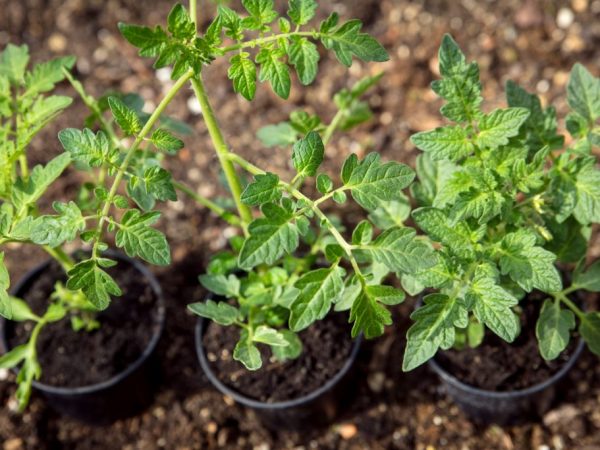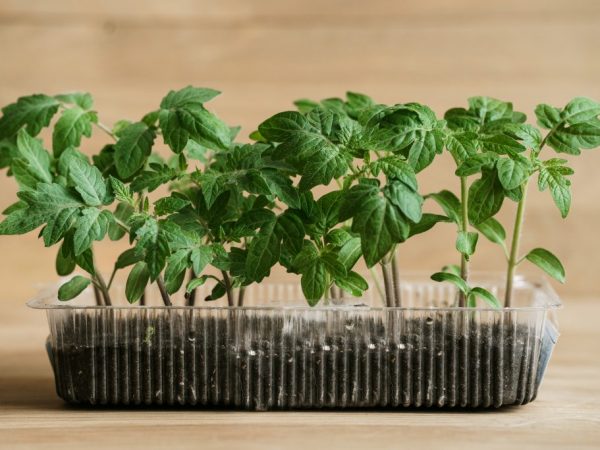How to harden tomato seedlings
Hardening tomato seedlings is an important stage in growing. Thanks to this process, the root system does not dry out, and the plant does not wither and gives juicy fruits.

Hardening tomato seedlings
Tatiana Orlova (Candidate of Agricultural Sciences):
Hardening of seedlings is not only an increase in their resistance to low temperatures of open ground, but to the whole range of external environmental influences: wind, heat, precipitation.
When to start hardening
How to harden tomato seedlings is a frequent question that arises among gardeners. Healthy, strong and developed tomato seedlings are obtained only if the hardening process lasts from the moment of sowing the seeds to planting in the ground. Hardening of young tomatoes is necessary for the bushes to adapt to new growing conditions.
It is recommended to start hardening tomato seedlings in the spring, in April. Proper hardening of tomatoes and feeding make the plant stress-resistant when transplanted into open ground.
Signs that the seedlings are ready for hardening and may soon be transplanted into the ground:
- Leaves color. They should be dark green with a purple tint. In the presence of white or other spots, it is not recommended to harden the seedlings.
- Stem condition. A stem that sags and falls under its own weight indicates that the vegetable crop is prone to drying out. It should be bright green and straight.
- Root system. If it is powerful, strong and developed, it will help the plant to take root and bear fruit. It is desirable that it have a fibrous structure.
- The state of the leaves. They should be light, with a developed leaf plate. The internodes need to be short.
Plants are not recommended to be planted directly into the ground if they are poorly hardened. In this case, the bushes are kept in a cool room for several days.
Hardening stages
Consider how to harden tomato seedlings after checking the sprouts for disease. The hardening process consists of several stages.
Seed preparation
The first stage is preparing the seeds for sowing. To do this, they are laid out on a small piece of cloth, placed in a bowl of water. For disinfection add a few drops of "Fitosporin" and cover the seeds with another part of the tissue.
In the room, the seeds are kept in this state for about a day, after which they are placed in the refrigerator. Cold and heat alternate for no more than 2 days. The hardened seeds are also treated with a manganese solution, after which they are planted in the ground. This processing process gives the effect of rapid maturation and productivity of the bushes.
Tatiana Orlova (Candidate of Agricultural Sciences):
Hardening of swollen tomato seeds is carried out with variable temperatures for about 1.5-2 weeks. Only then will it give a result. The aim of this work is to obtain seedlings that are cold-resistant (but not frost-resistant!). Tomato plants grown from hardened seeds are capable of relatively long time at a low positive temperature (+ 6-8 degrees) in the open field.
One of the advantages of a hardened bush is that it can be planted several weeks earlier than an unhardened one.The same goes for the first flower cluster, which appears 3-4 days earlier. After sowing seeds hardened in this way, the shoots sprout already on the 2nd day.
Gardeners are advised to take tomato seeds that:
- survived frost;
- grew in the fresh air;
- were collected about 2 years ago.
Watering
After 3 weeks, the seeds are poured with hot water for 2 hours, after which they are placed in cold water for 3-5 minutes. The seeds are then ready for planting.
Tatiana Orlova (Candidate of Agricultural Sciences):
Heat treatment of seeds is carried out to destroy viruses and pathogens of some fungal diseases that can persist on the seeds. The water temperature should be 45-50 degrees. To maintain this temperature for 2 hours, the seeds are placed in a thermos with hot water.
Gradually, the number of waterings is reduced. Initially, they are carried out using warm water, later its temperature is reduced. Tomato seedlings are watered once a week.
Hardening process

Follow the recommendations
The sprouted sprouts are planted in 11-14 days - a pick is carried out. After the leaves appear, the hardening process begins, which is based on the following actions:
- Lowering the temperature. In the room where the plant is located, the temperature should be lowered from 30 ° C to 20 ° C. Over time, the plant is transferred to the balcony or exhibited in the yard for about a couple of hours. In the process, observe the appearance of the leaves. Direct sunlight is contraindicated for sprouts.
- Watering. It is undesirable to water the plant abundantly before it is taken out into the street. Leaving sprouts in the fresh air is allowed in the evening or in the morning for 3-4 hours. This lasts 3-5 days and takes place just before disembarkation. Hardening of tomatoes occurs when the thermometer shows about 24 ° C heat. At night, the temperature should be 7-11 ° C.
- Safe from the wind. The sprouts should not be located in a draft. Strong winds can ruin the condition of the leaves and make the stem more vulnerable. It happens that gardeners use an extreme approach to stabbing, where low temperatures and windy weather are needed.
It is important to constantly monitor the condition of the plant, because when stabbing, the appearance deteriorates, after which the seedlings are brought back to a warm room.
Hardening at home
Hardening of young tomato seedlings can also be done at home. In this case, it is necessary to observe the thermal regime and the rules of watering.
In order for the plant to feel temperature changes, you need to take it out for 2-3 hours and place it near the window, and then bring it back into a warm room. This will allow the tomatoes to be hardened as quickly and efficiently as possible.
Experts advise doing this gradually and each time increasing the time the plant stays in a cool room. An excellent solution is to leave a thermometer near the plant in order to monitor temperature changes as accurately as possible.
It is recommended to harden tomato seedlings at home 2-3 weeks before planting, after which it is planted in the ground and its reaction is monitored. During hardening, the plant grows more slowly, but the advantage is a strong root and a powerful stem after the procedure. It is necessary to harden tomato seedlings, because this gives the plant immunity and tasty fruits.
Fertilizer application
You need to be careful with seed dressing. If you use nitrogen fertilizer during the hardening of tomatoes, the plant's resistance to frost decreases, it gets sick, therefore, during the hardening of tomato seedlings, you should not use this top dressing.
Fertilizers that can be used in the hardening process:
- Potassium sulfate solution. It is taken in an amount of 60 g. 10 g of ammonium nitrate, 40 g of superphosphate are added to it. All components are dissolved in 10 liters of water. The solution is used a couple of days before planting in the ground.
- "Kristallon" or "Kemira". They accelerate plant survival, help reduce the negative effects of pesticides."Kemira" is saturated with microelements: boron, molybdenum, manganese, iron, nitrogen. 2 tbsp. l. fertilizers are dissolved in 20 liters of water, and for seedlings, the entire package is dissolved in 20 liters.
- Double superphosphate slurry. In total, 80 g will be needed, 30 g of potassium nitrate is added to it. Spraying occurs during the period of ovary formation.
Top dressing is applied both to the bush and to the root system. Spraying the leaves is especially popular, since through them the plant takes in more useful elements. For the solution, use settled or rainwater.
Root feeding is also useful. It is introduced into the soil on the root system of the bush. Fertilization of tomatoes in the open field is carried out with both mineral and organic solutions.
One of the options is to take 300 g of dry poultry manure, add 15 g of urea, 15 g of superphosphate and 13 g of potassium sulfate to it. Additionally, wood ash is added in an amount of 30 g. All components are mixed with 20 g of simple superphosphate and 0.3 g of manganese sulfate per 10 l of water.



